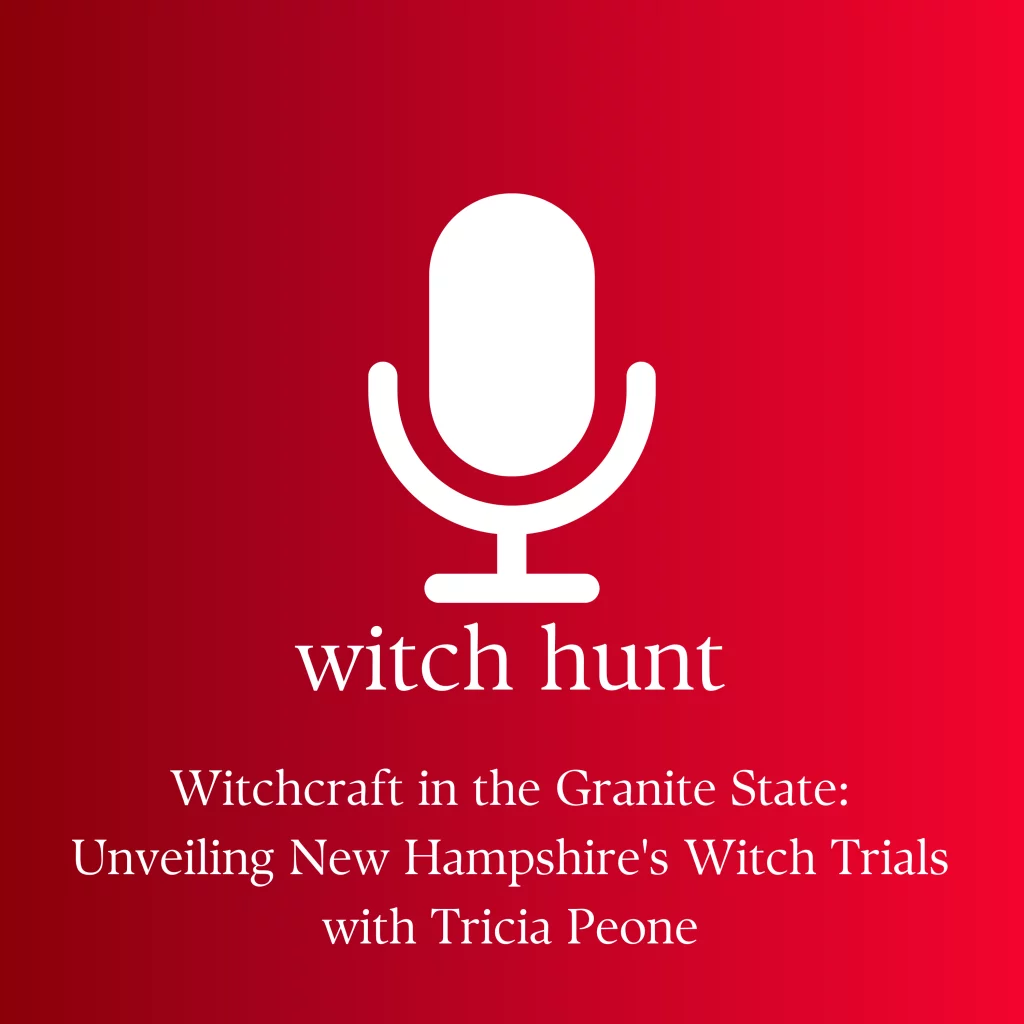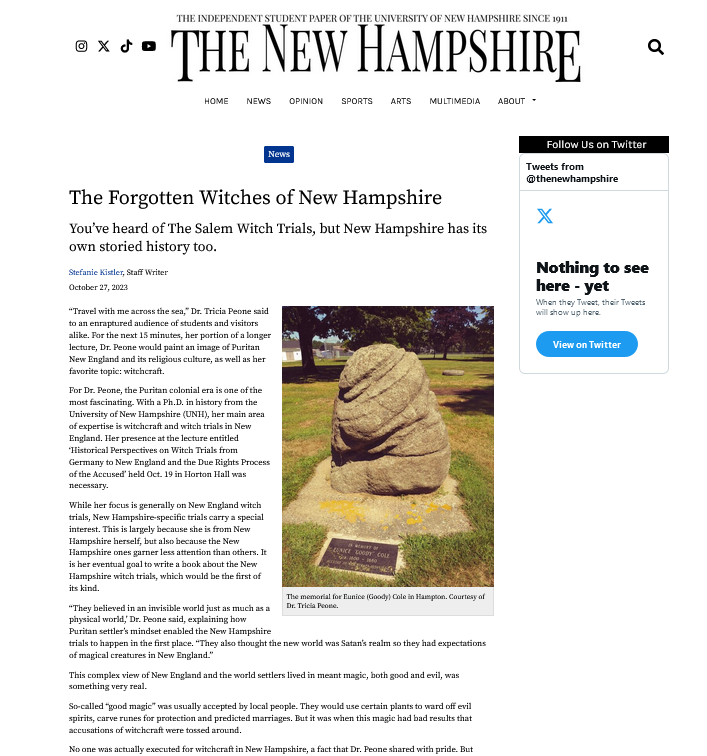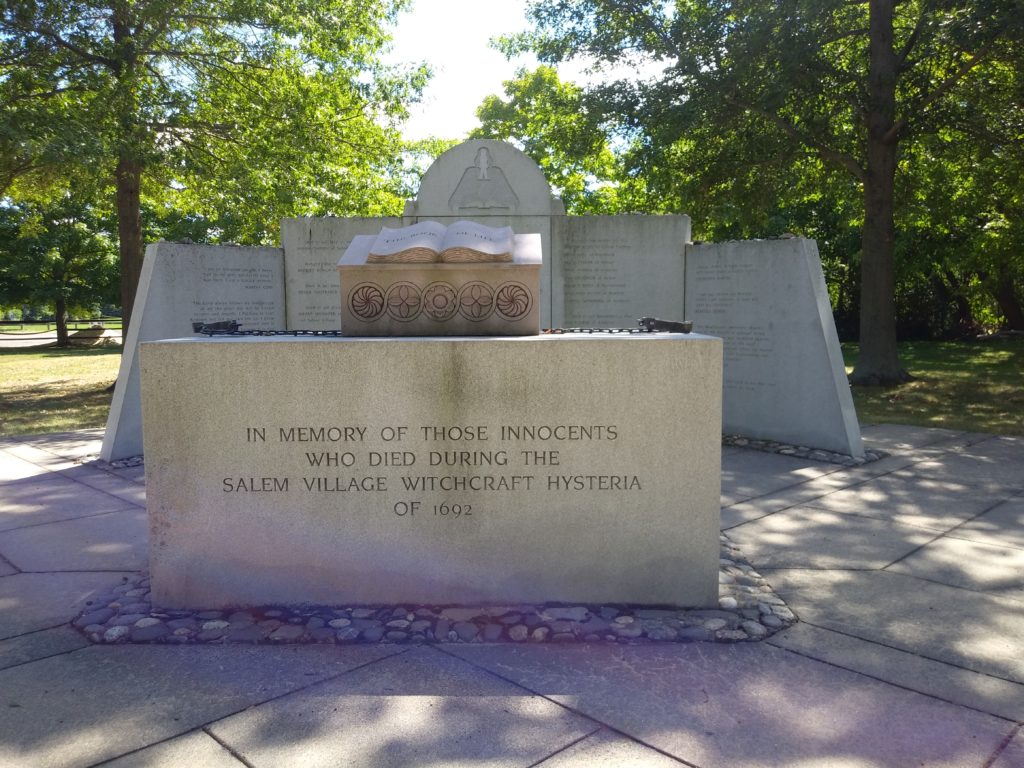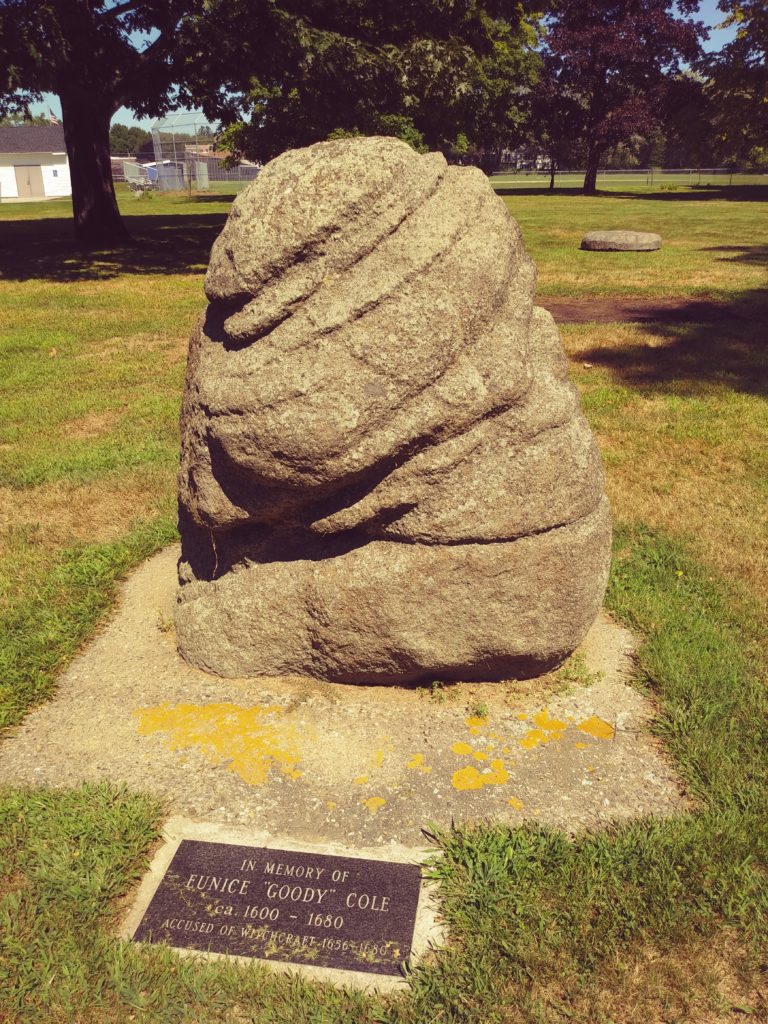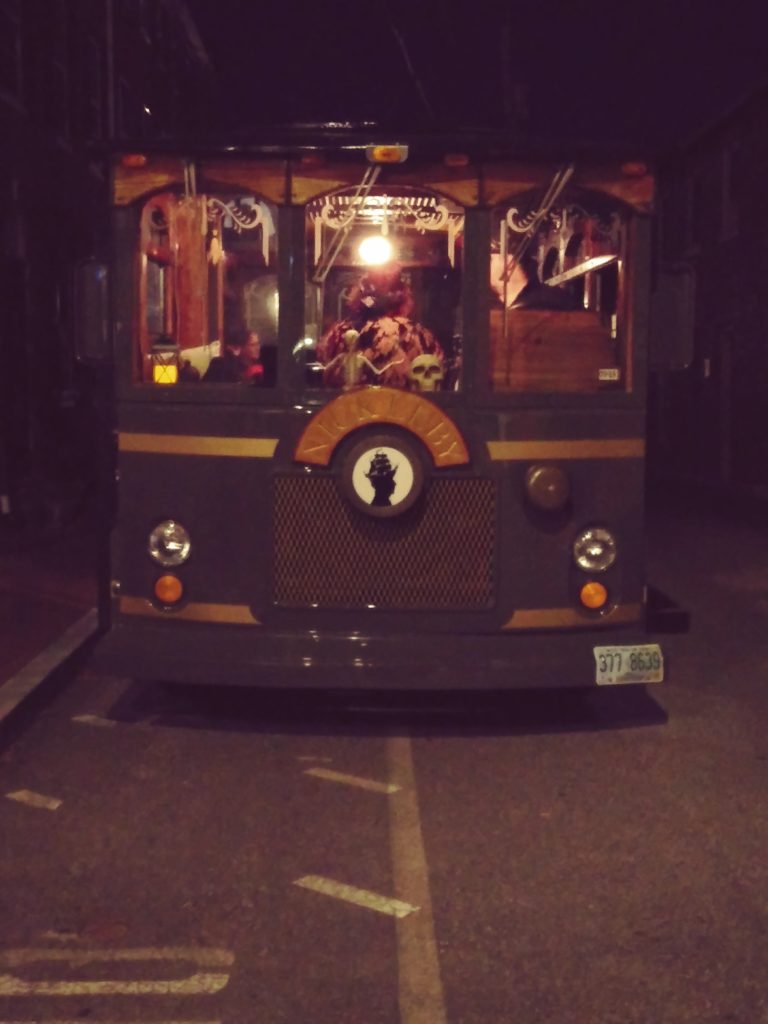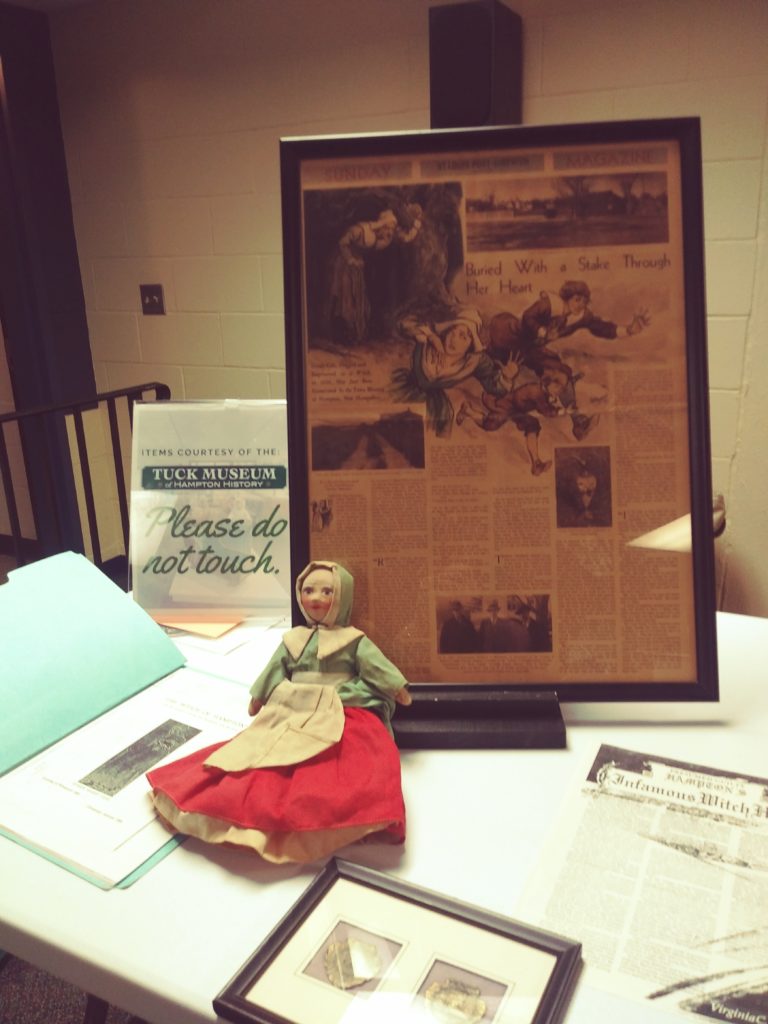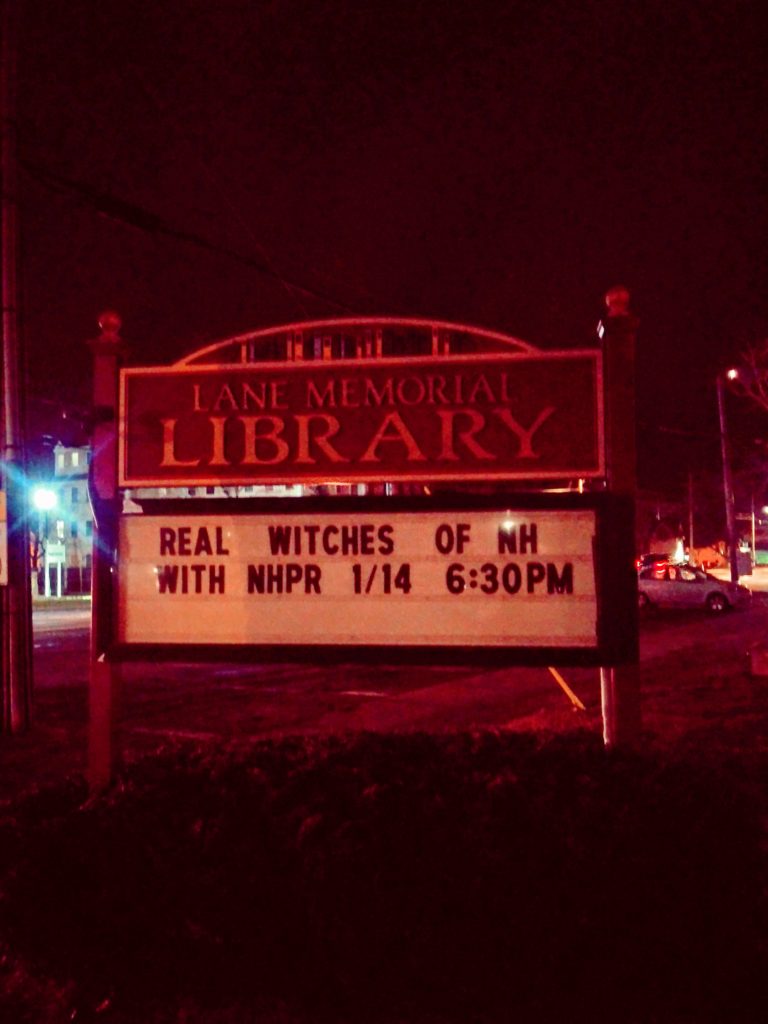This essay originally appeared as “Witches and Witch Trials: How to Convict a Witch” on the now defunct website www.thefrisky.com on October 27, 2015. Apparently it was bought out in 2016 and they deleted everything? Oh well, here’s my article:
The witch has become one of the most prominent symbols associated with Halloween. At this time of year you are likely to see images of witches with pointy hats, dressed in black, maybe accompanied by a cat or a cauldron. In popular culture, the image of a witch is often alluring—witches are attractive like the Halliwell sisters on Charmed or Samantha Stephens on Bewitched. Yet the symbol of the witch is often quite different from the reality of the historical witch. Our modern ideas about the qualities that define a witch have changed significantly from the ideas prevalent during the early modern period (1500-1800 CE) when witchcraft was a serious crime.
A lot has been written about the history of witchcraft in Europe and North America. By focusing on the concept of witchcraft as a legally-defined crime, we can get a clearer picture of the significance of witchcraft. Exploring the evidence used to convict for witchcraft helps us to understand what it meant to be accused of witchcraft during a period when people were actually executed for it.
Witchcraft was a type of magic that was defined by legal codes; it was generally understood as magic that caused harm to people or property. The laws in England in the seventeenth century covered several types of magical practices: it was a felony to conjure an evil spirit, to use witchcraft to injure a person, or to dig up corpses to use in spells. In addition to the laws against witchcraft, there was a large body of literature courts could draw on to help them identify and prosecute suspected witches.
In colonial North America, witches were defined by the specific types of evidence presented against them in court proceedings. For people living in the seventeenth century, magic and invisible forces were verifiably real and they could be harnessed for good or bad purposes. The evidence produced during witch trials demonstrated the reality of witchcraft to contemporary observers.
There was also a body of popular literature and folklore that could help someone who believed that they had been affected by witchcraft. Fashionable books on astrology could instruct readers in how to tell if their problems were caused by witchcraft, bad luck, or divine judgment. One of the most common remedies for removing a curse in colonial New England was boiling urine. And, of course, keeping a horseshoe over your doorway wouldn’t hurt. (NB: If you think you have been afflicted by a witch’s curse, heat your urine on the stove with a couple of crooked pins thrown in until the urine smokes. That should break the curse. Be warned though, it might also cause the witch to come to your house and appear concerned. If that happens, try putting some salt or bay leaves in the doorway to keep the witch outside. Do not let the witch inside.)
Evidence against an accused witch could include testimony from neighbors and family members. These proceedings were usually public, and old grievances between neighbors might become evidence of witchcraft: a sick child, a cow that wouldn’t produce milk, a frightened horse—when misfortune followed a disagreement, witchcraft could be the cause. Generally, the targets of these accusations were women. Women were more susceptible to the Devil’s trickery and more inclined towards evil. An anonymous author of an English pamphlet on witchcraft argued that women were too stupid to use real magic (that was the domain of learned male sorcerers), but by their nature women were vengeful and enlisted the help of the Devil to perform magic on their behalf.
It was also possible to find physical evidence of witchcraft. If someone died and witchcraft was the suspected cause of death, the accused would be asked to touch the corpse. If the corpse bled, that indicated that the accused person was guilty (this technique worked with all murder cases, not just those caused by witchcraft). In the majority of cases, the body of an accused witch would be searched for suspicious marks—often described as a flap of extra skin or a mole that resembled a tiny nipple. These marks on a witch’s body were caused by an animal familiar who suckled the witch for nourishment, generally after performing magic at the witch’s request. Margaret Jones, accused of witchcraft in Massachusetts in 1648, had “an apparent teat in her secret parts as fresh as if it had been newly sucked.” Jones was convicted of witchcraft and executed. Midwives were called in during these court proceedings to examine the body of accused women and report their findings to the court. This could be tricky because sometimes witches used their powers to make marks on the body disappear. Finding a suspicious mark was a clear indicator of guilt, although it was not enough on its own to convict.
Animals could also provide evidence against a suspected witch. Testimony against suspected witches included neighbors who noticed strange animals coming or going from the suspect’s house. Sometimes animals were also incorporated into confessions of witchcraft. In seventeenth century New England, cats talked to people in an effort to convince them to give their souls to Satan. A grey cat in New Hampshire offered a young girl “fine things” if she would agree to go and live with a suspected witch. At Salem in 1692, Mary Osgood confessed that a cat had tricked her into signing a covenant with the Devil.
Of course, the best piece of evidence against an accused witch was a confession. The purpose of gathering other evidence against the accused was to encourage them to confess in court. One legal reference book of the period suggested that a witch’s confession should include a description of the harm the witch had done to people, how she had made a contract with the Devil to become a witch, and the names of the familiar spirits she used.
Interestingly, a formal accusation of witchcraft was often preceded by attempts by members of the community to find other explanations for strange events, and accusations of witchcraft didn’t always stick. Sometimes accused witches sued their accusers for slander, and this strategy was occasionally successful. A woman accused of using witchcraft against her neighbors (and of turning into a cat) won damages against her accuser in the 1660s.
Witch trials were complicated legal procedures, and it was the strength of the evidence presented in court that determined whether or not someone would be convicted. Marks on the body, suspicious animal activity, and complaints from neighbors were strong indicators that someone was a witch. While witches have become cultural icons in modern society, the historical witch was defined as a legal transgressor, a criminal whose presence in society necessitated the harshest punishment courts could give: public execution.
Further reading:
Bengt Ankarloo and Stuart Clark, Witchcraft and Magic in Europe: The Period of the Witch Trials (London: Athalone Press, 2002).
John Demos, Entertaining Satan (New York: Oxford, 1982).
Ronald Hutton, The Triumph of the Moon (New York: Oxford, 1999).
Carol Karlsen, The Devil in the Shape of a Woman (New York: W. W. Norton, 1987).
Diane Purkiss, The Witch in History (New York: Routledge, 1996).
Old link for posterity:
http://www.thefrisky.com/2015-10-27/how-to-convict-a-witch/
